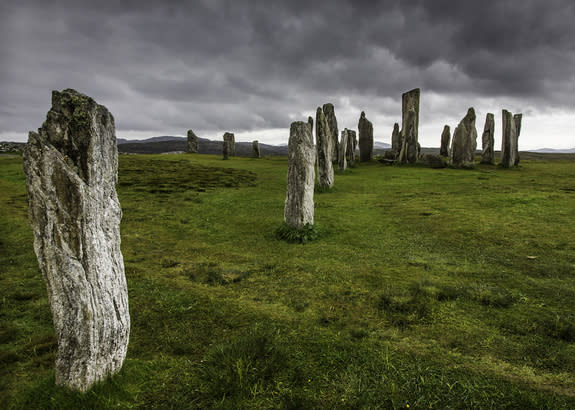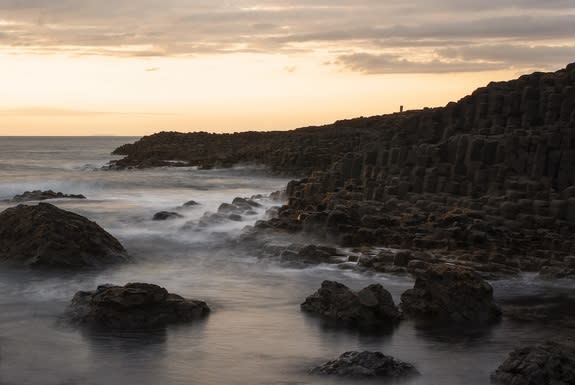Marble Caves and Neolithic Stones Shine in UK Photo Contest
On a cold, drizzly afternoon, Brent Bouwsema drove with his wife and two children to photograph some of the oldest stones in the British Isles.
Geologists think the Callanish Stones, which are made of an ancient type of rock called Lewisian gneiss, were built in the Neolithic period about 5,000 years ago. For the next 3,000 years, ancient people ritually used these stones, possibly as a calendar. Bouwsema took a photo of the moss-covered pillars, and ended up as one of the winners of the "100 Great Geosites" photography contest, The Geological Society of London announced today (Oct. 9).
Bouwsema's photo is one of 13 that The Geological Society will publish in a 2016 calendar featuring the geological wonders of the United Kingdom and Ireland. [See the Winning Photos from the "100 Great Geosites" Contest]
"We were impressed with the number and quality of entries to the competition," Sarah Fray, executive secretary of The Geological Society, said in a statement. "It's wonderful to see such a range of diverse images, and I hope the photographs will encourage many people to explore the geology all around us in the United Kingdom and Ireland."
In fact, photographing these geological marvels was a moving experience for many of the contestants. Bouwsema and his family had taken a trip from their home in Alberta, Canada, to the Isle of Lewis, located off Scotland's northwest coast. Upon their arrival, Bouwsema followed his 2-year-old son along the hilly path leading up to the Callanish Stones.
"Once around the hill, I came upon the stones and was taken aback on how stark and beautiful they were, almost taking my breath away," Bouwsema told Live Science in an email. "I've rarely felt that way in my life before, and could sense a certain feeling of power from the site."
Meanwhile, in Northern Ireland, Sarah Boulton snapped a shot of Giant's Causeway at dusk. Her photo captures the roughly 40,000 interlocking basalt columns along the shore. These columns were formed about 60 million years ago during the Paleogene, when the ancient supercontinent of Laurasia began to break apart, leading to the opening of the North Atlantic Ocean, according to The Geological Society.
Boulton, a lecturer in the School of Geography, Earth and Environmental Sciences at Plymouth University in England, used a 2.5-second exposure to blur the water surrounding the rocks.
"I was on holiday for the first time in Northern Ireland, visiting friends and generally exploring with my husband, and we just had to visit [Giant's Causeway]," she said. "I don't think any geologist would be able to resist! We arrived as the visitor center was closing, and after a couple of hours waiting for the sun to set, we pretty much had the causeway to ourselves, allowing me to take the photo."
The other winning photos are pictures of landscapes, museums, public buildings and beaches, all from The Geological Society's list of 100 geosites in the United Kingdom and Ireland. The top three winners will be announced Oct. 12, The Geological Society said. The contest also kicks off the start of Earth Science Week, a week of geologic workshops and events that feature the geologic heritage of the region.
Follow Laura Geggel on Twitter @LauraGeggel. Follow Live Science @livescience, Facebook & Google+. Original article on Live Science.
Copyright 2015 LiveScience, a Purch company. All rights reserved. This material may not be published, broadcast, rewritten or redistributed.




